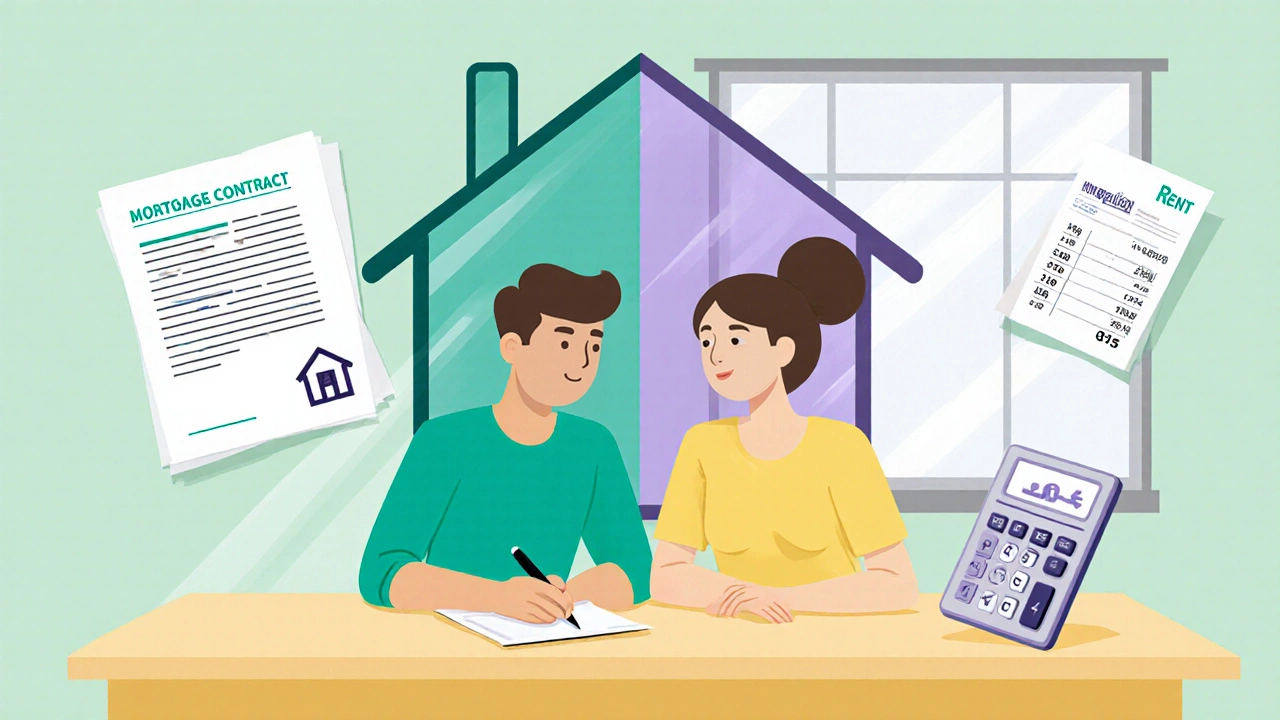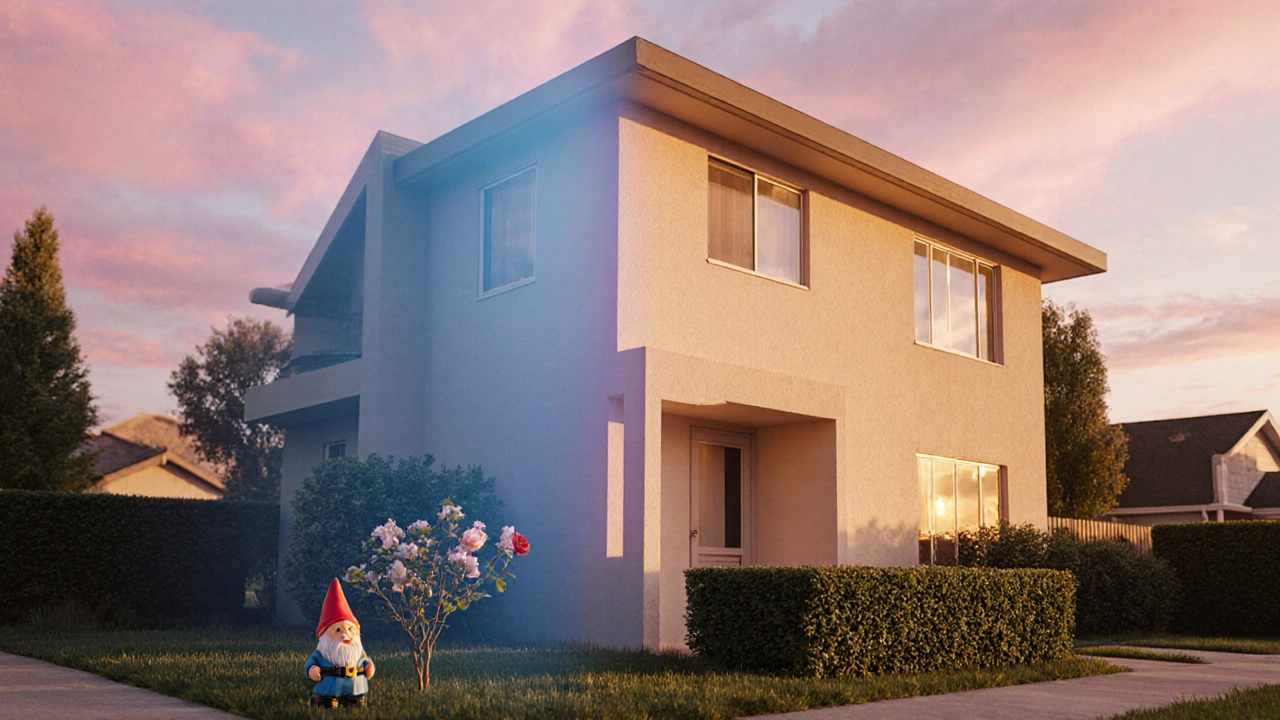Home Share Payment Calculator
Calculate Your Home Share Costs
Enter your details to see your estimated monthly payments for shared ownership.
Your Inputs
Results
Compare to Full Ownership
How It Works
Your monthly payment includes a mortgage on the portion you own and rent on the portion you don't own. The rent is typically 2.5%-3% of the non-owned value. Service charges cover maintenance and common area costs.
This calculator uses a standard 25-year mortgage term. You can increase your ownership later through staircasing, which allows you to buy additional shares over time.
When you hear home share is a type of shared ownership arrangement that lets you own a slice of a property while paying rent on the rest, you might wonder how the math adds up and whether it fits your budget. This guide breaks down the whole process, from eligibility to monthly payments, so you can decide if a home share is the right path to your own front door.
Quick Takeaways
- Home shares let you buy 25‑75% of a property and rent the remaining share.
- You pay a mortgage on the portion you own and rent on the rest, usually to a housing association.
- Staircasing - buying more shares later - can eventually give you full ownership.
- Eligibility often includes income caps and first‑time‑buyer status.
- Key benefits are lower deposit, reduced mortgage size, and a clear route to full ownership.
What Exactly Is a Home Share?
A home share, also called a shared ownership scheme, is a government‑backed or housing‑association program designed to make home‑ownership more affordable. Instead of buying a house outright, you purchase a percentage - typically between one‑quarter and three‑quarters - of the market value. The remaining share stays with the provider, and you pay rent on that portion.
Core Components of a Home Share
Three financial pieces keep the arrangement running:
- Equity loan or share purchase - the lump sum you pay to own your slice of the property.
- Mortgage - a loan for the share you own, usually smaller than a traditional mortgage.
- Rent - paid on the percentage you don’t own, often at a reduced rate compared to market rent.
Because the mortgage covers only part of the property value, monthly payments are typically lower than buying 100%.
How Payments Are Structured
Imagine a house priced at NZ$500,000. You decide to buy a 50% share:
- Equity loan: NZ$250,000 (the purchase price of your share).
- Mortgage on your share: say 4.5% interest, monthly principal‑and‑interest payment of about NZ$1,260.
- Rent on the other 50%: usually 2.5%-3% of the remaining value, roughly NZ$800 per month.
Total out‑of‑pocket cost each month is about NZ$2,060, plus service charges and utilities. Compare that with a full‑mortgage payment of around NZ$2,700 on the same property - you save roughly NZ$640 every month.

Eligibility and Application Process
Most schemes target first‑time buyers or those moving up from social housing. Common criteria include:
- Maximum household income (often NZ$80,000-$120,000 depending on region).
- Credit score that meets lender standards.
- Proof of a stable job or reliable income stream.
- Not currently owning another residential property.
Steps to apply:
- Research providers - housing associations, local councils, or private developers offering shared‑ownership homes.
- Get a mortgage in principle for the share you intend to buy.
- Submit an application with income proof, identification, and a deposit (usually 5‑10% of your share).
- Undergo a property valuation to confirm the market value.
- If approved, sign the lease‑hold agreement and the mortgage deed.
Pros and Cons of Home Shares
Pros
- Lower deposit than buying outright - often as little as 5% of the share price.
- Smaller mortgage means lower monthly repayments.
- Staircasing lets you increase your ownership over time.
- Access to new‑build or refurbished properties that might be out of reach otherwise.
Cons
- You still pay rent, which can increase each year.
- Selling can be more complex; you need the provider’s consent.
- Service charges and maintenance costs are shared.
- Staircasing requires extra mortgage approvals and may involve higher rates.
Home Share vs. Renting vs. Full Ownership
| Aspect | Home Share | Renting | Full Ownership |
|---|---|---|---|
| Up‑front cost | 5‑10% of share price | Security deposit (≈1month rent) | 15‑20% deposit of full price |
| Monthly payment | Mortgage+Rent on share | Rent only | Mortgage on 100% price |
| Equity build‑up | Yes, proportionate to share owned | No | Yes, full equity |
| Flexibility to move | Requires provider approval; resale possible | Easy to end lease (with notice) | Can sell anytime |
| Maintenance responsibility | Shared - landlord handles structural, you handle interior | Landlord handles most repairs | Owner responsible for all |

Common Pitfalls and How to Avoid Them
Even with its benefits, a home share can trip up unsuspecting buyers. Here are three frequent issues and quick fixes:
- Underestimating rent hikes. Rental rates in many schemes are tied to the Retail Price Index (RPI). Work the projected increase into your budget before signing.
- Missing the staircasing window. Providers usually set a minimum period (often two years) before you can buy more shares. Keep track of that timeline so you don’t lose momentum.
- Ignoring service charges. These can add a few hundred dollars a month. Ask for a breakdown during the viewing and factor it into your affordability calculation.
Next Steps if You’re Ready
Take these actions to move forward:
- Use an online calculator (most housing‑association sites offer one) to model different share percentages.
- Speak with a mortgage adviser who has experience with shared‑ownership products.
- Visit at least two home‑share properties to compare location, condition, and service‑charge levels.
- Prepare a folder of financial documents - payslips, tax returns, and bank statements - to streamline the application.
Frequently Asked Questions
Can I rent out a home‑share property?
Generally no. Most schemes require you to live in the home as your primary residence. Sub‑letting without permission can breach the lease and lead to eviction.
What happens to my rent if property values rise?
Rent is usually linked to an inflation index, not the market price. So even if the house’s value climbs, your rent may only rise modestly each year.
Is staircasing mandatory?
No. You can stay with your original share indefinitely. Staircasing is optional and only pursued when you’re ready financially.
Do I need a solicitor for a home‑share purchase?
Yes, a solicitor will handle the legal paperwork, check the lease terms, and ensure the mortgage is correctly registered.
Can I switch providers if I’m unhappy with my current housing association?
Switching is possible but complex. You’d typically need to sell your share back to the provider and start a new application with another scheme.
How does a home‑share affect my credit score?
Both the mortgage and rent are reported to credit bureaus. Consistently paying on time can boost your score, while missed payments will hurt it, just like any other loan.
